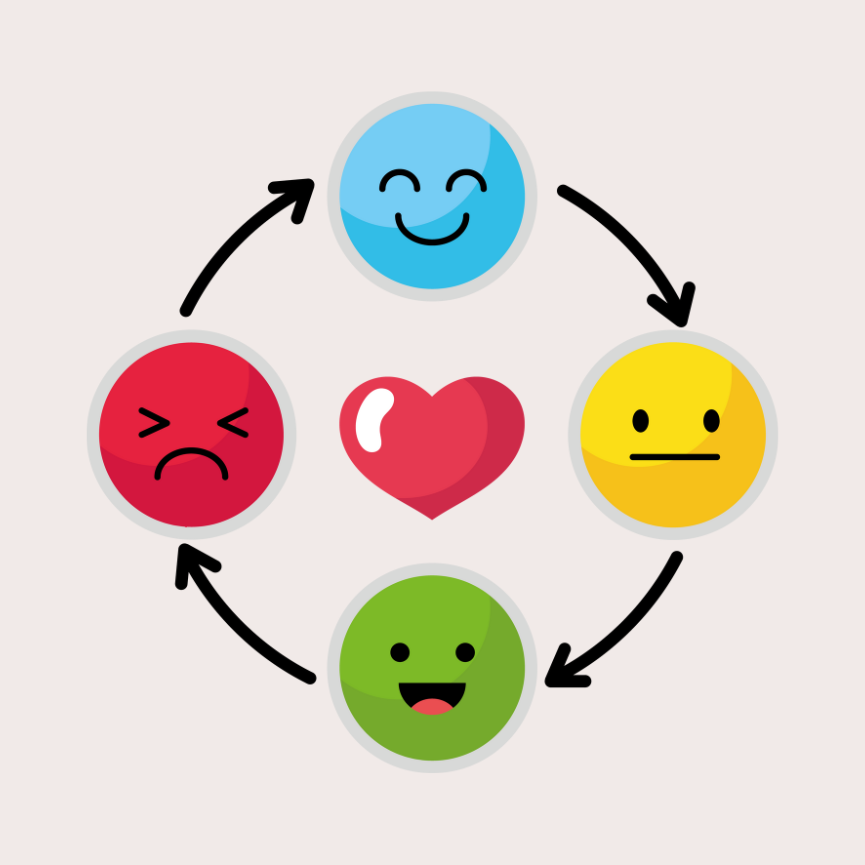
- May 09, 2024
- 150 Views
- 0 Comments
Emotional Regulation In Autistic Children
Enhancing Emotional Regulation in Autistic Children: Effective Strategies for Parents and Educators
In a world that's increasingly focused on mental health, understanding and enhancing emotional regulation in autistic children is more crucial than ever. Learn how in our blog!
Emotional regulation is a critical aspect of a child's development, shaping their ability to manage and express emotions appropriately. For children on the autism spectrum, emotional regulation can be particularly challenging due to sensory sensitivities and difficulty processing emotions. However, with the right strategies and support from parents and educators, enhancing emotional regulation in autistic children is not only possible but can lead to significant improvements in their overall well-being and social interactions.
Emotional Regulation in Autism
Emotional regulation refers to the ability to recognize, understand, and effectively manage one's emotions in various situations. In autistic children, emotional regulation can be affected by several factors, such as sensory overload, difficulty understanding social cues, and communication challenges. These difficulties often result in emotional meltdowns, anxiety, and social withdrawal, impacting the child's daily life and relationships.
Importance of Enhancing Emotional Regulation
Improving emotional regulation skills in autistic children can have far-reaching benefits. Enhanced emotional regulation allows them to cope better with stress, build meaningful relationships, and engage more effectively in social situations. It can also lead to improved focus and concentration, making learning and academic progress more achievable.
Effective Strategies for Enhancing Emotional Regulation
Create a Predictable Environment:
Establishing a predictable environment is vital for autistic children's emotional regulation. Creating daily routines and providing visual schedules help them anticipate what comes next, reducing uncertainty and anxiety. A consistent environment fosters a sense of security, enabling children to manage their emotions and behaviors better.
Teach Emotion Recognition:
Emotion recognition is a fundamental skill for emotional regulation. Utilize visual aids such as emotion cards or picture books to help children identify and label different emotions in themselves and others. Engaging in role-playing scenarios can further enhance their understanding of emotions and appropriate responses in various situations.
Implement Sensory Integration Techniques:
Given the common sensory sensitivities in autism, incorporating sensory integration techniques is crucial. Activities like deep pressure massages, using weighted blankets, or engaging in sensory play can help children self-regulate when they feel overwhelmed. These techniques provide a calming effect and promote emotional stability.
Practice Mindfulness and Breathing Exercises:
Teaching mindfulness and deep breathing techniques can significantly benefit autistic children's emotional regulation. Regular practice of mindfulness helps them develop self-awareness, enabling
them to identify and process their emotions effectively. Breathing exercises serve as relaxation tools, reducing stress and anxiety levels.
Social Skills Training:
Engaging children in social skills training programs facilitates emotional regulation in social interactions. These programs focus on understanding social cues, taking turns, and responding appropriately in social settings. Role-playing and peer group activities offer practical learning opportunities, helping children navigate social situations with increased confidence.
Encourage Expression through Art and Play:
Art and play serve as therapeutic outlets for emotional expression. Providing art supplies and toys that enable non-verbal communication allows children to express their feelings creatively. This form of expression can be particularly beneficial for those who struggle with verbal communication.
Use Visual Supports for Emotional Regulation:
Visual supports, such as emotion charts or feeling thermometers, play a crucial role in helping children identify and manage their emotional states. These visual aids provide a tangible way for children to recognize their emotions and select appropriate coping strategies accordingly.
Incorporate Special Interests:
Leveraging a child's special interests can motivate their engagement in emotional regulation activities. Integrating their favorite characters or topics into the learning process makes it enjoyable and encourages active participation.
Foster a Supportive Environment:
Creating an inclusive and accepting environment is essential for emotional regulation. Autistic children should feel safe expressing their emotions without fear of judgment or punishment. Encouraging open communication and validating their feelings fosters emotional growth and self-acceptance.
Collaborate with Therapists and Educators:
Effective emotional regulation requires a coordinated effort between parents, therapists, and educators. Collaborating with professionals ensures that consistent strategies are implemented both at home and in educational settings. A holistic approach enhances the child's emotional development and strengthens their emotional regulation skills.
Enhancing emotional regulation in autistic children is a journey that requires patience, understanding, and a tailored approach. By incorporating predictable routines, sensory integration techniques, social skills training, mindfulness practices, and creative outlets, parents and educators can provide the necessary support to help these children better manage their emotions. With the right strategies in place, autistic children can gain confidence, build stronger relationships, and experience improved overall well-being, leading to a brighter and more fulfilling future.



Comments - 0 comments till now